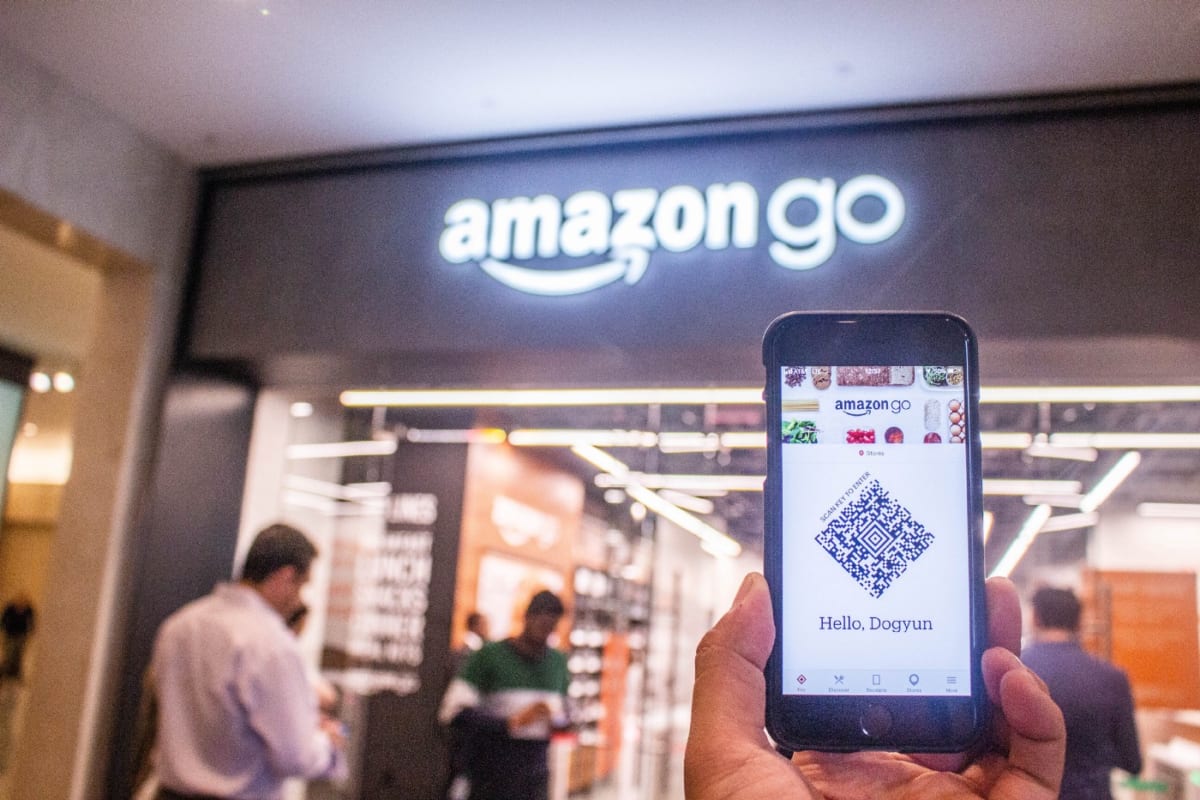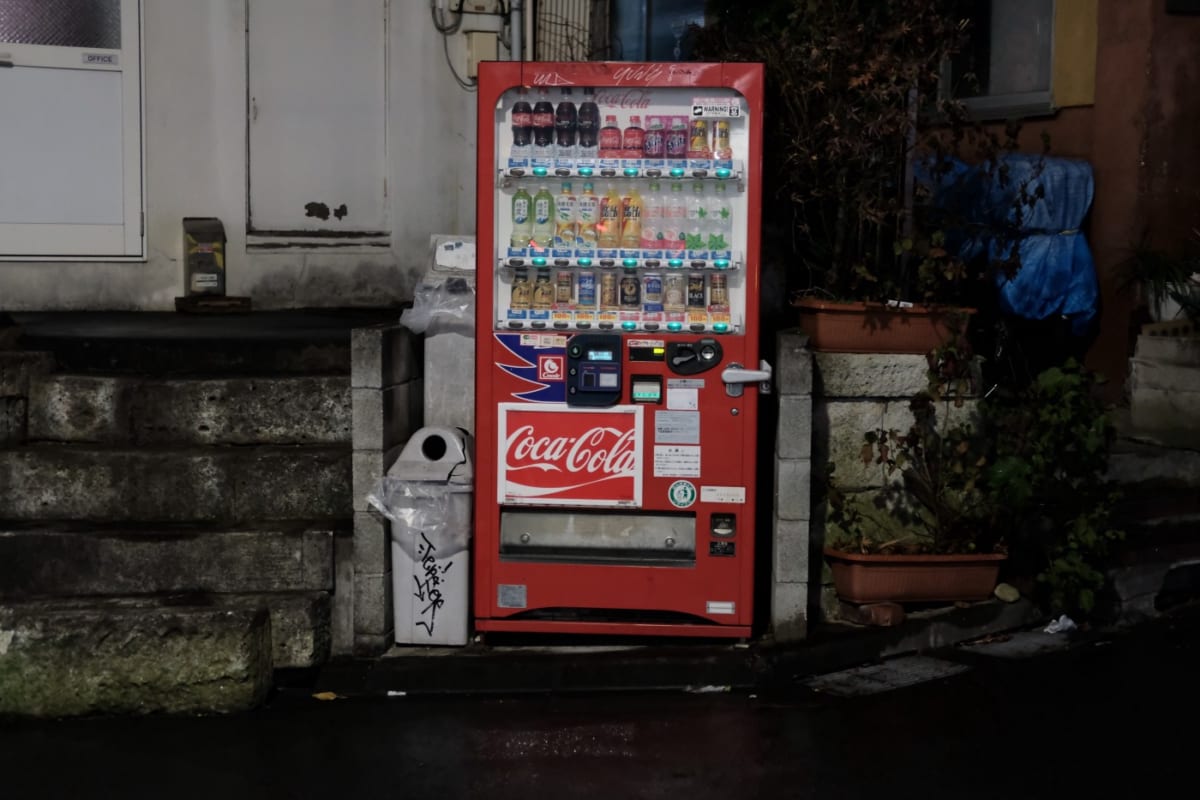Table of Contents
- Amazon Go is basically a celebration, but it’s also a ridiculously expensive vending machine
- size issue
- Environment issues
- Store renovation issues
- cash problem
- labor cost issue
Amazon Go is basically a celebration, but it’s also a ridiculously expensive vending machine
“ If you want a glimpse into the future of retail, check out Amazon Go stores. ”
Hahahahaha
(after taking a breather)
HAHAHAHAHA
CNN, don’t say that .
・・・
The idea behind Amazon Go is simple in theory. Customers download the app (the app is always there ), link it with their credit card to generate a unique code, and present it at the store entrance. When the fence at the entrance is open, you can shop freely without being bothered by the staff’s customer service. Cameras follow customers as they shop, computer vision algorithms track what they pick up, and smart shelves loaded with sensors confirm what the cameras “see.” Items are added to a virtual basket and automatically charged when the customer leaves the store.

This should be enough to get you started, but if you want a more visual experience, the video below provides some more basic ( albeit exaggerated ) information.
The idea of cashless has made waves in retail over the past five years. By the way, why should stores become cashless? At first glance, automating store management, which places a heavy burden on staff, looks like a grand idea. Automated cash registers give employees more time to upsell, take online orders and respond to customer inquiries. And with rising wages and the impact of online shopping, stores have to contend with lower profit margins. So letting go of some staff sounds like a great idea for a struggling retailer. This situation has accelerated during the COVID-19 epidemic.
Computer vision can help with automated inventory (which is also a big plus if you’re looking to reduce “cost”/people), and reduced theft ( $34 billion in lost sales to theft worldwide in 2017 ). , is equivalent to increasing the available space to increase revenue per square meter.
Finally, computer vision will allow access to more detailed data. In addition to tracking what customers have bought by linking them to their name and account, you can visually follow them and track what they didn’t buy (what they looked at, picked up and put back…). That would shed light on 80% of the buying process that has been a black box until now (unless there’s someone with a pencil to follow shoppers and write down what they see. In fact , Human-powered tracking is still practiced .)
All of this raises a pretty compelling argument in favor of Amazon Go-style stores if you’re a retailer. But I want to explain that this particular technology works only for Amazon and not for other companies.
size issue
The Amazon Go idea may work for small concept stores, but it won’t work for large, high-traffic stores. The first reason it doesn’t work is that cameras are known to malfunction in large crowds (shelf sensors also malfunction by picking things up and putting them back in random places – in humans I often do such animal things ). The second reason is that large-scale stores have a wide range of products. Amazon Go has about 1,000 items in stock, compared to about 80,000 at a typical grocery store.
Any decent computer vision software can be 98% accurate on thousands of items. This means that if a customer picks up 20% of the items on Amazon Go on a given day, there will be about 4 mistakes per store per day. By the same logic, if supermarkets implemented this solution as is, they would have 320 errors per store per day. This assumption means that there are 320 customers per day who are likely to switch to other stores (retail is a fluid industry), which is good for any store, large or small. is not. And these error assumptions do not take into account the fact that errors in computer vision algorithms grow exponentially.
Even I can’t tell the difference between 80g and 120g chips in the big stores with so many similar products. Amazon does a good job of making products easy to identify, but a large store like Walmart would never be able to.
Environment issues
Computer vision uses packaging to identify products. Specifically, it uses the shape of the product with the printed surface intermingled to facilitate recognition. But retailers now seem desperate to reduce packaging, and they are doing so (the retail industry is trying to save the turtle ). Innovation is great, but it doesn’t exist in a vacuum.
Furthermore, there are many commodities such as fruits and side dishes that cannot be packaged, and the packaging of commodities has become an increasingly complex problem for grocery stores.
Finally, all soft materials must be excluded from computer vision (the technical term is “too fluffy” to be recognized). This would prevent fashion stores from using the specialized mix of technologies used by Amazon Go.
Store renovation issues
Most retailers don’t have the cash to rebuild their stores from scratch. That means whatever space you have now has to be refurbished to fit the new process. When introducing computer vision cameras and smart shelves, the following modifications occur.
- Buy enough cameras to cover the entire store, tear down the existing ceiling, and rebuild it to support the weight of the hardware.
- In order for the camera to see everything, nothing should be blocking the view. Therefore, shopping carts become inconvenient and the marketing equipment that manufacturers use to advertise their products gets in the way. Goodbye, beautiful promotional activities.
- Invest in brighter lighting to make it easier for the camera to “see”.
- Invest in new air conditioners: Many cameras produce a lot of heat.
- Invest in new, smarter shelves.
Even assuming the algorithm was magically free, the first Amazon Go store in Seattle’s downtown district required an investment of over $1 million in hardware alone . The investment is too expensive for a retail industry striving to increase profit margins.
cash problem
Many countries are still cash-heavy for a variety of reasons (take Germany, for example) . Therefore, it is even possible that legislation will be enacted in the near future to allow all stores to accept cash to prevent discrimination. There are a lot of people who don’t have smartphones, and they may be the ones most in need of a simple grocery store. Mandating the availability of cash is not a “disruption stifle” ( sometimes referred to as Ludditeism ), governments are doing their job.
One of the many reasons customers continue to use cash is simply privacy. Amazon claims that it retains purchase data and video data captured for image recognition only long enough to provide accurate receipts, and retains a small portion of such information to further train its algorithms. Just do it. But if you know the Bezos way, you also know that Amazon’s claims represent a deal with the devil. Learning and improving an algorithm of this nature requires an exponential amount of data.
We don’t hesitate to trade privacy for an Amazon Prime discount was ). But traditional retailers have little to offer customers in exchange for giving up much of their privacy.
The reason why cashless payments have not spread in Germany is that during the Cold War era when East and West Germany existed (especially in East Germany) government surveillance was traumatic, so cash is preferred because it keeps users anonymous. because _
labor cost issue
There is no doubt that automation will generate more profits because less human labor will be needed. If so, would it be profitable if: Fire the low-paid cashier and hire a high-paid data scientist to replace it. Data scientists are highly paid. And even if a company were to buy the algorithm instead of developing it, the product it would be implemented in would be very expensive to maintain and would require training and “probabilistic tuning.”
This paradox is exactly what happens when you’re obsessed with cutting costs. It will be chopped into cost cuts.
You should also stop using Amazon Go, arguing that new technology will create as many jobs as it will destroy. There are 3.4 million cashiers in the US, but not many data scientists are being trained. Wake up and be aware of those who might turn into mobs because of Amazon Go.
・・・
So far, we’ve talked about food, fashion, and retail technology that can’t be used in large-scale stores. But as Amazon has noticed, it’s good for selling snacks (water and gummy bears are the best sellers). And they will soon have to accept cash payments .
CNBC reports that as of 2017, 6.5% of American households (approximately 8.4 million households) do not have bank accounts, and that bans on cashless stores are being considered in major American cities such as New York and San Francisco. It is also reported that there are
I see, i see.
Buying snacks with cash is…
Hey you know this!

Fundamentally, Amazon Go is to be celebrated, but it’s nothing more than a terrifyingly expensive vending machine.
Broadly speaking, innovation must either reduce costs or provide dramatic customer benefits (remember the RFID hype? Survivorship bias is a hell of a drug. becomes (*translation note 7)) . Amazon Go is neither. Surely this technology will live on because it’s great. But unless it scales up “massively,” backed by massive funding that only Amazon has access to, no other brand will ever realize a cashierless chain of stores.
Survivorship bias can also be seen when entering a new business. Specifically, looking only at success stories in new businesses and believing that those businesses will succeed. In this case, cases of failure in new business are ignored.
These are simple economic consequences.
What’s more, Jeff Bezos is someone who would not let an opportunity pass for financial reasons. Especially if the new venture is a good place to put profits from other business areas to pay less in taxes, he will be generous with the money.
Amazon doesn’t want to make money from its store. I want the data to feed the beast (algorithm like).
Is Amazon Go the Future of Retail? That’s ridiculous. When Amazon uses biometrics instead of mobile codes and apps and starts selling that data to customers’ insurance companies, it’s a funny joke.

